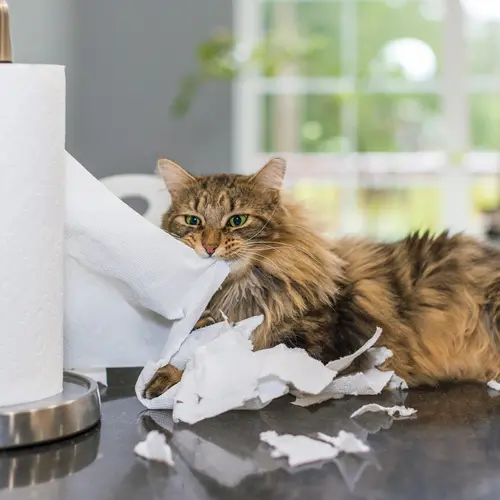Mastitis happens when a mammary gland, also called the breast, becomes inflamed. Cats have a row of mammary glands and nipples on their undersides, and mastitis can happen in one or many of the glands. The condition usually happens during nursing and after birth, but it’s uncommon in cats.
What Causes Mastitis in Cats?
There are two types of mastitis in cats: septic and non-septic.
Septic mastitis occurs when your cat gets an infection in the breast, usually from Staphylococci, E. coli, or Streptococci bacteria. These bacteria get into the mammary gland through the nipples, wounds, or by traveling through the blood from another area in the body. An unclean living area for your cat and poor care and hygiene can raise the risk of infection.
Non-septic mastitis happens when the mammary gland becomes inflamed for other reasons. This usually happens during weaning or after a kitten suddenly dies. The milk builds up in the gland or glands and causes inflammation, but not because of an infection. Non-septic mastitis can also occur if a gland is injured or damaged.
What Are the Symptoms of Mastitis in Cats?
The first sign of mastitis might be observed in kittens that aren’t growing or gaining weight. If there’s inflammation in the mammary glands, the kitten might not be able to get enough milk, which can lead to growth problems and cause a condition called failure to thrive.
In these mild cases, the only sign might be slight discomfort or mildly swollen mammary glands in cats without other signs. Poorly growing kittens might be the only clear sign.
As the inflammation worsens, though, mastitis symptoms in cats might increase and cause:
- Swollen, hard breast
- Red or purple skin
- Pain
- Open sores on the breast
- Scabs on the breast
- Bloody milk
- Pus in the milk
- Cloudy or thick milk
- Hot breast
- Depression
If the infection gets worse, it can spread and make your cat noticeably sick. Worsening mastitis in cats causes symptoms like:
- Fever
- Loss of appetite
- Dark purple or black skin
- Throwing up
- Lack of energy
- Neglecting kittens
How Is Mastitis in Cats Diagnosed?
Your vet will assess your cat’s history and symptoms and do a physical exam. They might also coax some milk from your cat’s nipple and examine it. Your vet can usually diagnose mastitis just by looking, but in some cases, they might want to do some tests to confirm. These can include:
- Blood tests to check for changes in your cat’s white blood cells, which can show an infection
- Bacteria culture to check the bacterial strain
- Milk cytology to check for signs of infection like bacteria and white blood cells
What Is the Treatment for Mastitis in Cats?
Mastitis from a bacterial infection is treated with antibiotics and pain medications. Since antibiotics can pass through your cat’s milk to the kittens, your vet will avoid some types like tetracycline, chloramphenicol, or aminoglycosides. In non-septic mastitis, your cat will be alert and healthy, and medication usually isn’t needed.
For both types of mastitis, you can put warm compresses on the area 4 to 6 times a day to ease some discomfort and help the gland to drain.
Cool cabbage leaf compresses can also help relieve the pain and swelling. You can keep the leaves in place for 2 to 3 hours and then take a 3-to-4-hour break between compresses and allow kittens to nurse. Secure the leaves in place with a bandage so the cat doesn’t try to take them off.
Gently draining some milk by hand can also help. If your kittens aren’t weaned, get them to nurse from the swollen glands. If they are weaned, you can lower your cat’s food and water intake to pre-pregnancy amounts to help slow down milk production. Make sure kittens are getting water and proper kitten food.
What Are the Complications of Mastitis in Cats?
Severe infections can happen, which can cause dehydration, shock, abscess, and tissue death. Your cat might need to be hospitalized to facilitate monitoring and IV infusions. If pus and bacteria collect in an abscess, your vet might need to do a minor surgery to drain and clean it.
In most cases, the outlook for mastitis in cats is good. Symptoms usually get better within 2 to 3 weeks with treatment. If you think your cat has mastitis, talk to your vet.

